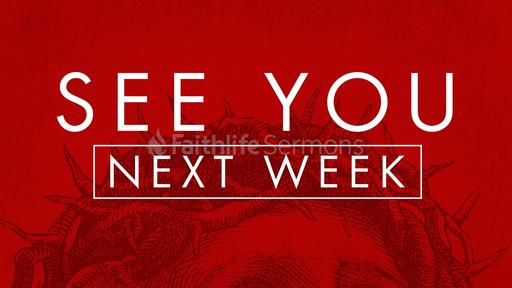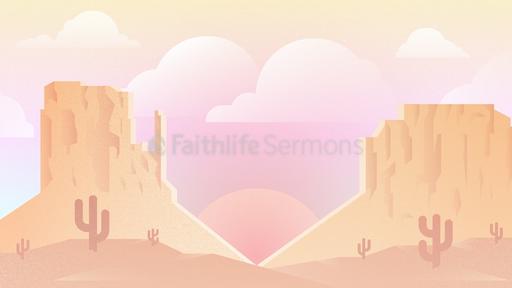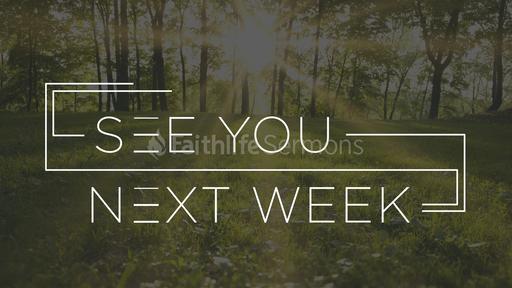Bickersteth talk about Holy Week
Notes
Transcript
We are getting closer and closer to Holy Week, the holiest week of the year.
There are many different ways to mark the events of this week, which have evolved and changed over the centuries and continue to be done differently in different branches of the Church, and indeed, of the Church of England.
However, there is a series of traditional liturgies, which has been distilled for us by CW Times and Seasons, following a pattern which has developed from the earliest Church and which is largely held in common with all the churches which share a Catholic tradition.
There are two basic ways in which to interpret the liturgies of Holy Week as it is practised today.
One is about re-living an experience, making it one’s own, so that we experience the events of Jesus’ final week on earth afresh every year, in the way that Jewish people re-live the Passover. It brings the past into the present and reminds us that both contain an eternal truth central to our faith. It also reminds us of the full gamut of emotion and human experience Jesus went through and confirms for us once again that the Incarnate Christ really did share in everything we go through, and that he really is “God with us.”
From fourth-century Jerusalem we have examples of the liturgy being a re-living of Christ’s footsteps in this way – on Palm Sunday pilgrims would walk from Gethsemane to the gates of Jerusalem carrying palm branches and on Good Friday the commemorations would end with a walk to Golgotha. This kind of relatively stripped-down liturgy presumes that we know the story inside out, and we can re-live it in our heads.
The other is a more missional or evangelistic way of doing things, which explains the significance of the narrative in detail and brings it alive to those who are experiencing it without much prior knowledge. An element of this is essential in modern secular society, in which perhaps the majority of people who come into our churches are not fully versed in every tiny detail of the Passion, but who can be drawn by the beauty, the mystery and the story itself into the heart of faith.
Oddly, both the medieval Passion plays and the large chunks of the Passion read after the Reformation and still laid down in the Book of Common Prayer for every day in Holy Week fulfil this second aim in different ways.
They tell the story, the whole story, and this is perhaps why we read the whole of the Passion Gospel on Palm Sunday as well as Good Friday, and why the Book of Common Prayer involves a large part of the story every day.
We don’t want to make it so mysterious that only the initiated and the theologically learned can understand what is going on. In fact, we do want to include elements that draw others in to find out more.
Using a donkey in a procession on Palm Sunday is a case in point.
The early Christians never did this, and it isn’t mentioned as an idea in any of our liturgies, but large numbers of churches do use a donkey, in order to teach the details of the story, and frankly to catch the attention of children and passers-by, who might then become curious about what is going on and follow along.
There are lots of other elements in the story of Holy Week, and in particular of the Triduum, the Great Three Days from Maundy Thursday evening to the Resurrection, which could be seen as mere “props” to help us to re-live and understand the story, but which also, in some sacramental sense, are MORE than just a gimmick – they contain some essence of Christ’s story within them. The water at the foot-washing on Maundy Thursday, the bread and wine of the Last Supper, the wooden Cross on Good Friday and the Paschal Candle, which represents Christ, the Light of the World, as he rises from the dead during the night before Easter Day… all these are vital to the telling of the story, but also bring us in some special way into the presence of the Crucified and Risen Christ himself.
So we begin on Palm Sunday, with the procession which re-lives Jesus’ triumphal entry into Jerusalem, riding on a beast of burden ) either from Mark 11.1-11 or John 12.12-16). We are encouraged to wave palm branches and to sing Hosanna, as we are told the people did as he arrived.
And yet, the sudden change of temperature, as we get to the second half of the service, the reading of the Passion (this year from Mark 14-15), shows how very quickly a crowd can be infiltrated and turned from friendly to hostile, as we have seen in so many demonstrations in recent times. Suddenly those who have shouted “Hosanna” seem to be shouting, “Crucify him..”
Perhaps we are left wondering what we would actually have done if we were there.
Monday, Tuesday and Wednesday of Holy Week continue the story into increasing darkness, as we meet every day for simple Eucharists, reflections or night prayer.
Monday we will hear the story (John 12.1-11) of how, early in that final week, Mary of Bethany anointed Jesus’ feet with her hair, anticipating his death.
Tuesday we shall be reminded of Jesus’ declaration that “The hour is come” (John 12.20-36), and the phrase, “unless a grain of wheat falls into the earth and dies, it bears no fruit.” We are being slowly prepared for what is to come.
And on Holy Wednesday, we are traditionally reminded (John 12.21-32) of how Judas Iscariot, after sharing in the Last Supper with Jesus and his friends, suddenly goes out alone into the darkness to betray him. The scene is set for a single liturgy which, in the earliest Church, was all completed during the night of Holy Saturday and Sunday morning, but is now divided over three separate stages.
Then the Sacred Triduum (or Three Days) begins with Maundy Thursday. Maundy Thursday is the Christian holy day that commemorates the Last Supper of Jesus Christ with his disciples before his crucifixion. The term "Maundy" comes from the Latin word "mandatum," which means "commandment." This refers to Jesus' commandment to his disciples during the Last Supper to love one another as he had loved them. The Gospel of John recounts this moment when Jesus says, John 13:34 “I give you a new commandment, that you love one another. Just as I have loved you, you also should love one another.”.
So, "Maundy Thursday" essentially means "Commandment Thursday."This day , often in the evening, we gather in church for a Eucharist which begins with the powerful symbol of foot-washing, where the priest washes the feet of the congregation. We hear the Gospel reading (John 13.1-35) which describes Jesus himself taking the bowl and towel and washing his disciples’ feet, telling those who protest, “Unless I wash your feet, you have no part in me.”
Cleansed, we move to the Eucharist, re-living those events of Maundy Thursday (1 Corinthians 11.23-26), whilst in the elements of bread and wine, encountering the mystery of Jesus’ broken body and blood.
But the Maundy Thursday service ends in darkness and chaos, as Psalm 22 is sung or said, “My God, my God, why hast Thou forsaken me…” and the altar is stripped of all its light and beauty, just figures moving about in the darkness as we imagine it must have been in Gethsemane at the time of Jesus’ arrest.
The remaining consecrated hosts are taken to a separate little Altar, the so-called Altar of Repose, surrounded by flowers and candles. We are encouraged to keep vigil before this altar, remembering the abuse and imprisonment following his arrest, as Jesus rebuked his disciples in the Garden as they waited for his captors, “Could you not even watch one hour with me…?” (Mark 14.37)
We leave Christ there, alone in the darkness as we go home in silence.
So we come to Good Friday. One theory suggests that "Good" is a corruption of "God's Friday" or "Holy Friday," emphasising the religious significance of the day. Another theory suggests that "Good" originally meant "pious" or "holy," so Good Friday would have been understood as Holy Friday. In some languages, Good Friday is referred to with names that translate to "Great Friday" or "Holy Friday," emphasising its significance in the Christian faith.
As we return, we find the altar still stripped bare as we come to share in the three hours between 12 and 3 when we recall Christ’s Crucifixion. Often, there are reflections or music before the Cross, and we are then led into the liturgy itself, as a wooden Cross is brought in. Here we sing the words, “This is the wood of the Cross on which hung the Saviour of the world.”
Veneration of the Cross may take place where we kiss or touch a large wooden cross to encounter within it something which acts almost like a sacrament, “an outward and visible sign of an inward and spiritual grace.” We remember the grace offered to us through this act of self-sacrifice on the Cross. At the Liturgy of Good Friday (as the service is called), we hear the Passion (story about Christ’s death on the Cross) According to John (John 18-19)
The congregation then communicates from the reserved Sacrament, taken from the Altar of Repose Maundy Thursday. When everything is gone, the locked aumbry or tabernacle, in which any consecrated hosts are normally kept, is left wide open to emphasise the stark emptiness of Holy Saturday, when Christ’s body has been laid in the tomb. We wait, with the disciples…
And then, the final Day of the Three, we come to Easter Eve. Some of us celebrate this on Saturday evening, some before dawn on Easter Day. We are, of course, only told that Mary Magdalene came to the tomb very early before it was light, and the body of Christ was gone. We don’t know at what time the mystery of the Resurrection itself took place, so we are allowed some leeway!
This third part of the liturgy in any case begins in darkness, reminding us of the dark ending of Maundy Thursday and the emotional darkness and sadness of Good Friday.
But now the light begins to dawn. We hear the story of God’s salvation of his people, we light an Easter Fire to symbolize the beginnings the return of light to the world, and we light from it the Paschal Candle, marked with nails to show Christ’s scars, but shining brightly in the darkness as we glimpse the hope and glory of the Resurrection.
The Exsultet is often sung as the most ancient of Resurrection hymns (and is probably one of the few places in a service that bees are mentioned!), and as the candle is carried into church, candles and lights are lit to dispel the darkness of the past days.
The Gospel reading (Mark 16.1-8) describes the women coming to the tomb, but uncertain what has happened. It is the beginning, but not the final glory.
This was traditionally the moment when baptism candidates who had spent Lent preparing to be initiated into the Christian faith were cleansed from their sins, and together with Christ, rose to new life on Easter Day. Today we may still baptize people at that most special moment, or the full congregation may renew their baptismal vows together.
And finally, straightaway or early on Easter Day, we celebrate the Resurrection in full, with beauty and music and lilies and the first Eucharist of Easter. Christ has risen from the dead, but we can only fully appreciate the joy of the moment if we have walked with him the way of his Cross, experiencing the foot-washing, the Last Supper, the betrayal and abandonment of Gethsemane, the watch in the darkness, the long-drawn out pain and suffering of the Cross, and the emptiness of Holy Saturday.
It is then we all come together to, for the first time since before Lent, once again acclaim with great joy, a certain A-word!
And so, before any questions, let us finish by praying the Good Friday collect together:
Almighty Father, look with mercy on this your family for which our Lord Jesus Christ was content to be betrayed and given up into the hands of sinners and to suffer death upon the cross; who is alive and glorified with you and the Holy Spirit, one God, now and for ever. Amen.
ADVERTISEMENT
Related Media
See moreRelated Sermons
See more

Thomas • 74 views


Petter Kringberg • 11 views


Jeff Ream • 79 views



